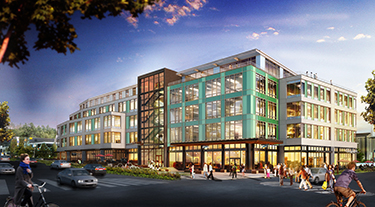|
Subscribe / Renew |
|
|
Contact Us |
|
| ► Subscribe to our Free Weekly Newsletter | |
| home | Welcome, sign in or click here to subscribe. | login |
Construction
| |
 |
April 24, 2014
Survey: Skanska USA
Specialty: Building, commercial development, civil
Management: Chris Toher, executive vice president — general manager, building; Lisa Picard, executive vice president, commercial development; Tony Taddeo, senior vice president — general manager, civil
Founded: 1946
Headquarters: Skanska USA is headquartered in New York City; Seattle headquarters is at Alley 24 in South Lake Union
2013 revenues: $6.7 billion (U.S.), $355 million (Washington)
Projected 2014 revenues: N/A
Current projects: Stone34, a 129,000-square-foot building with four stories of office above a retail level at the intersection of Fremont and Ballard; 400 Fairview, a 13-story, 337,000-square-foot office building in South Lake Union; Alley 111, a 12-story, 260-unit apartment building in downtown Bellevue with ground-floor retail
The DJC asked Skanska about the firm, and issues and trends in the industry. Here’s what Chris Toher, executive vice president and general manager, had to say.
Q: What types of projects will thrive locally in 2015?
A: Seattle is growing at a rapid pace, as evidenced by the cranes popping up all around downtown. According to the Economic Development Council of Seattle and King County, we’ll see close to 40 major projects under construction in the county’s major metropolitan areas over the next year — evidence of a thriving development market.
On the construction side, both public and private sector customers want quality projects on a shorter time-line. You’ll see projects that allow for alternative delivery methods like design-build and general contractor/construction manager thrive because they allow for more collaboration between the contractor, design teams and the client, and an accelerated construction schedule.
Everyone is hoping that our state Legislature can tackle a transportation bill. There is certainly a need for infrastructure improvements as our city and region grow.
Q: What industry trends do you see?
A: Lean construction methods are aligning with alternative delivery methods in ways that provide customers with more value, delivering top quality on shorter schedules. This is also leading to adoption of construction methods like prefabrication. When appropriate, we are assembling building systems off-site, then delivering nearly completed elements to the project site for installation. That can improve time-lines and reduce safety risks. Right now, we are installing prefab bathroom pods in the new oncology wing at the Virginia Mason Medical Center, saving our client time and minimizing disruptions in a highly sensitive environment.
Increased use of technology, particularly that which aligns with lean goals. This year represents our fourth offering of the Innovation Grant, a program that funds the research and development of innovative employee ideas and encourages engagement with local colleges and universities.
This program has produced exciting new products, such as the InSite monitor, a mobile app used in sensitive facilities to provide our crews with real-time data on the levels of noise, vibration and dust being generated by construction activities. This app is currently being used at Virginia Mason.
Q: Is there overbuilding in the local apartment market?
A: Toher declined to answer.
Q: What does your firm do in terms of green practices?
A: While we are champions of green building — Deep Green projects like Stone34 and the West Coast’s first certified Living Building, the Bertschi School Science Classroom — we think it’s important to look beyond what we build and also examine how we build.
Skanska, as one of the only ISO 14001-certified construction firms in the country, is audited every year by a third party for its environmental performance in the process of construction. Every project gets an individual environmental management plan that addresses the unique environmental aspects of a given site. The goal is to make sure that construction activities do not have an adverse effect on the immediate environments in and around our project sites.
Q: What’s the biggest issue in your industry?
A: There are some industry challenges with the workforce. Given the generational shift, we need to make sure we capture and share knowledge from industry veterans before they retire. We’re working hard to mentor new employees and provide them with ample opportunities to learn. All the while, they’re bringing fresh perspectives and ideas that will change our industry.
Q: What types of public projects are you doing locally?
A: K-12 schools, higher education and government/military.
Other Stories:
- ABC Awards • Eagle of Excellence • Mixed-Use Construction
- Survey: Andersen Construction
- Survey: BNBuilders
- Survey: J.M. Riley Co.
- Financing equipment? Know these 7 things first
- Builder’s risk insurance can be a subcontractor’s best friend
- Worker shortage ‘coming at us like a freight train’
- New law protects contractor proposal information
- Reduce financial risk by tracking construction costs
- What can public agencies learn from Bertha’s journey?
- Survey: Mortenson Construction
- Survey: Venture General Contracting
- ABC Awards • Mechanical Construction
- ABC Awards • Demolition
- ABC Awards • Institutional
- ABC Awards • Community/Public Service
- ABC Awards • Commercial Construction
- ABC Awards • Electrical & Communications
- ABC Awards • Specialty Construction
- ABC Awards • Tenant Improvement
- Survey: Abbott Construction
- Unique demolition project goes underground



